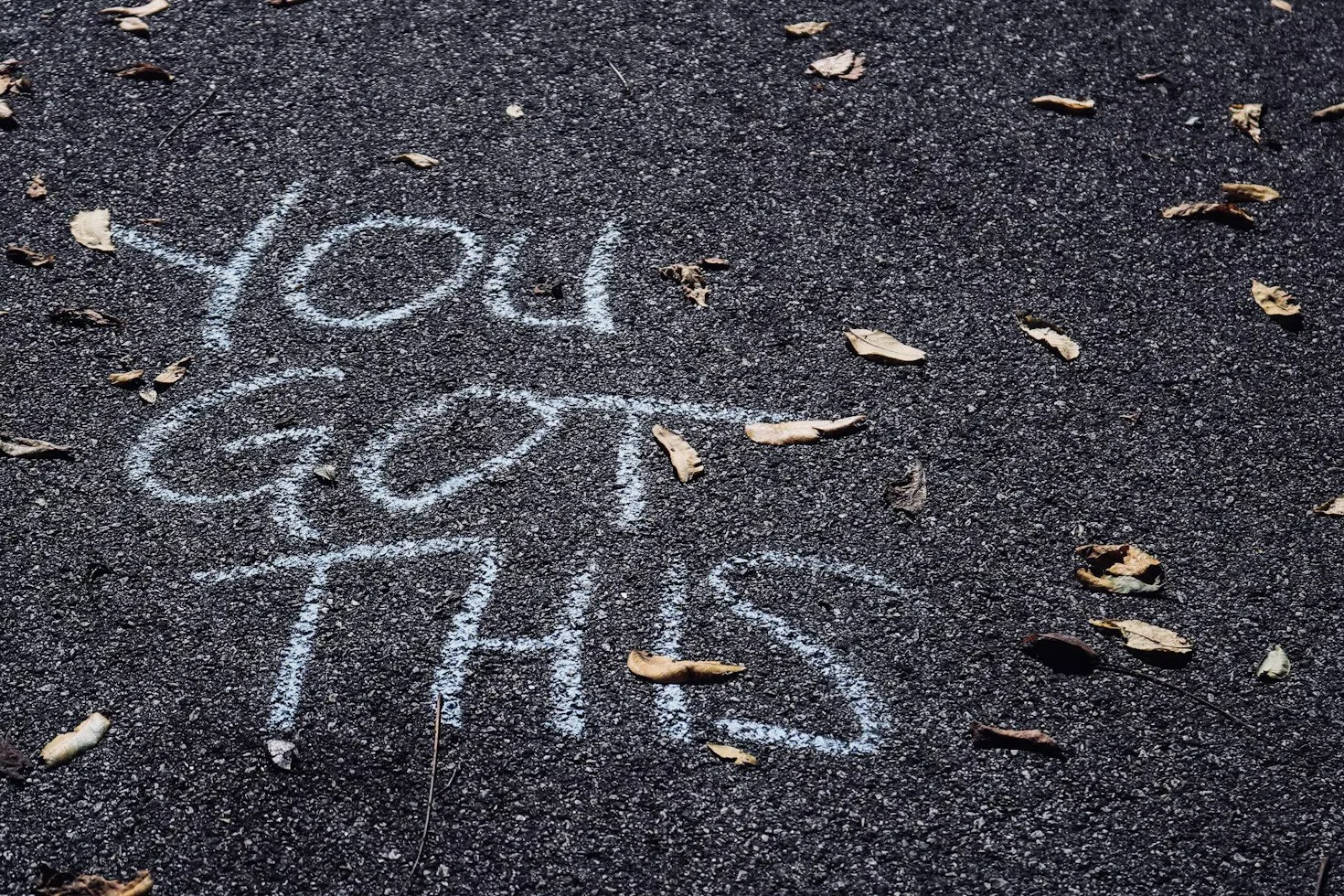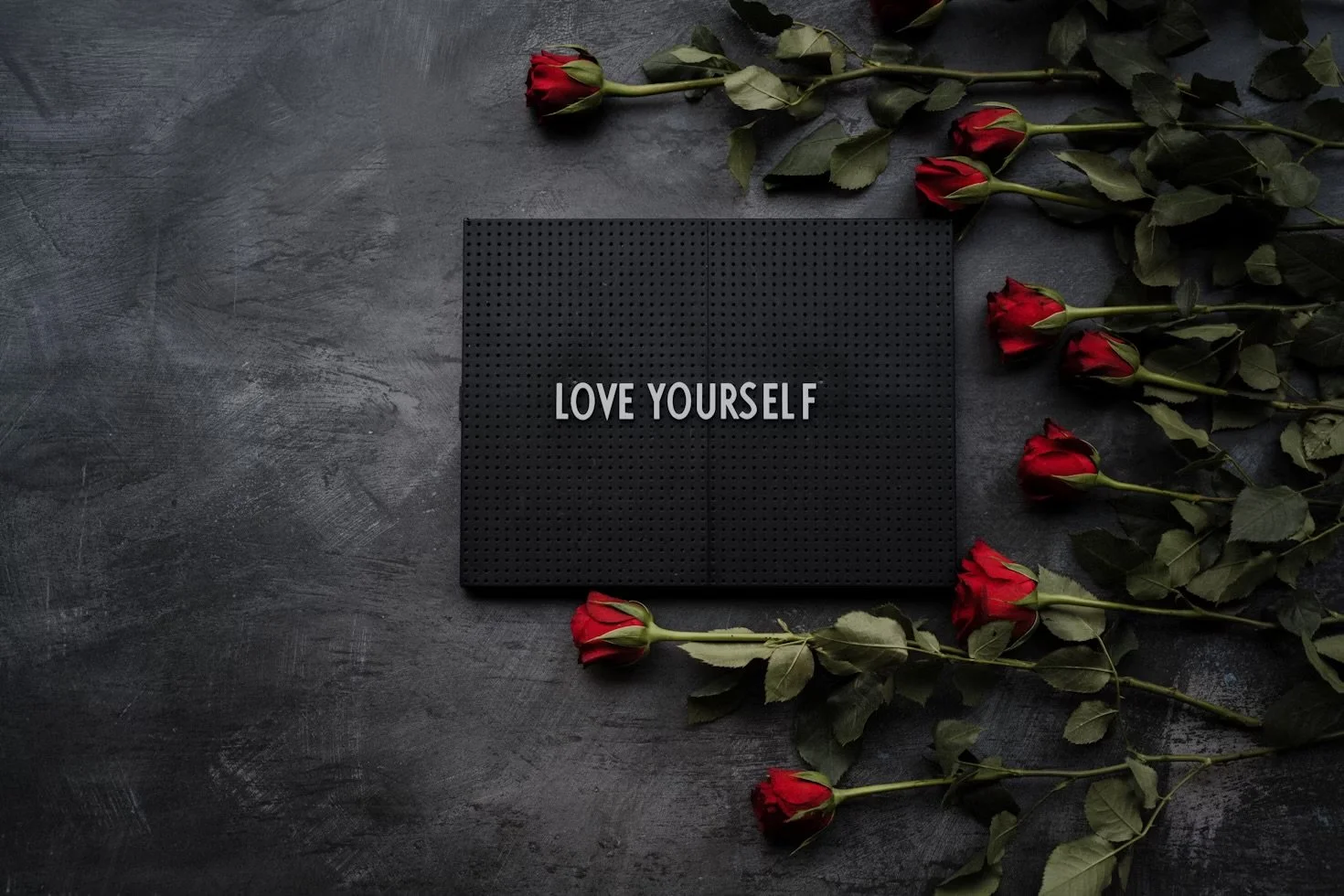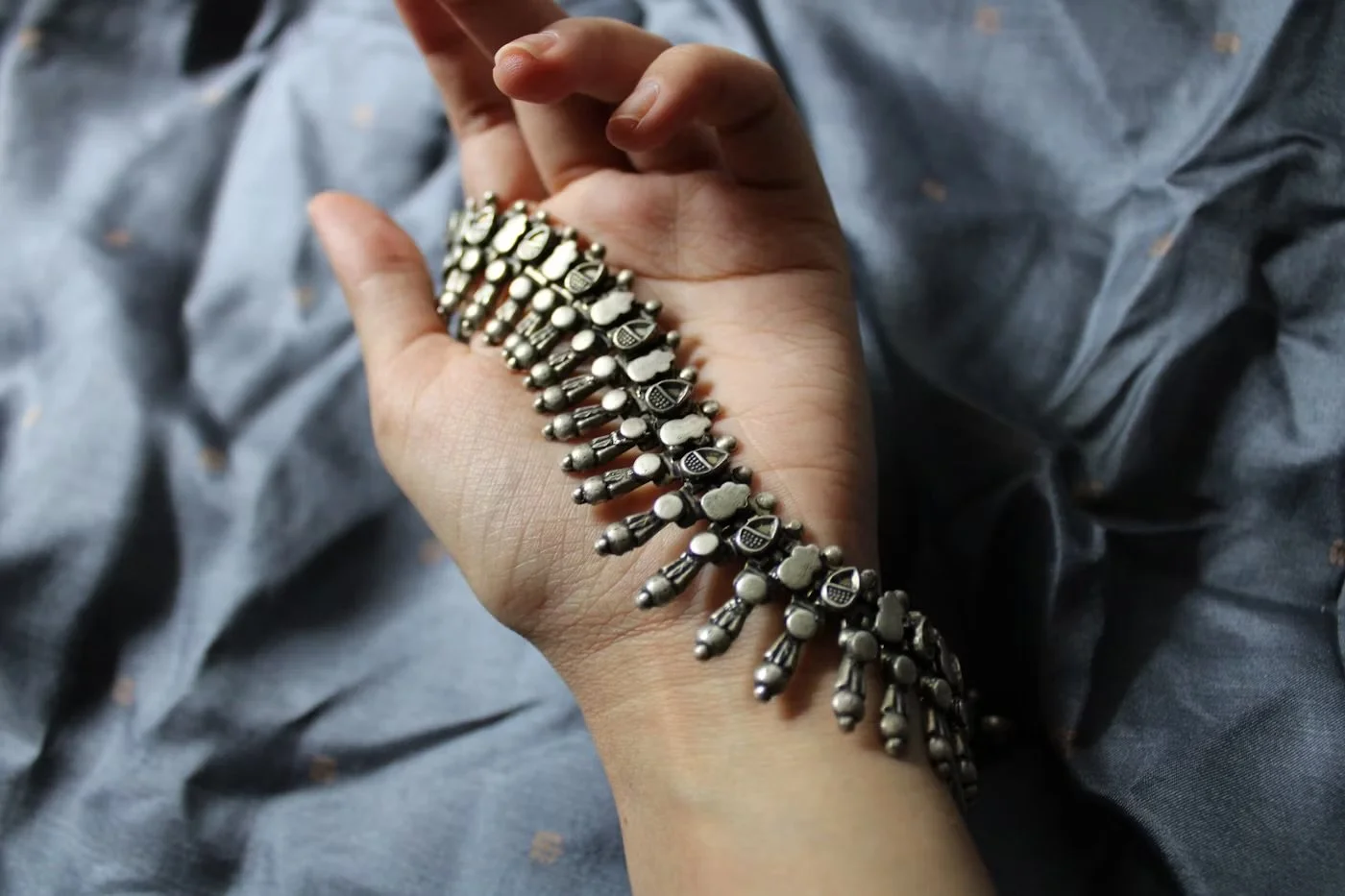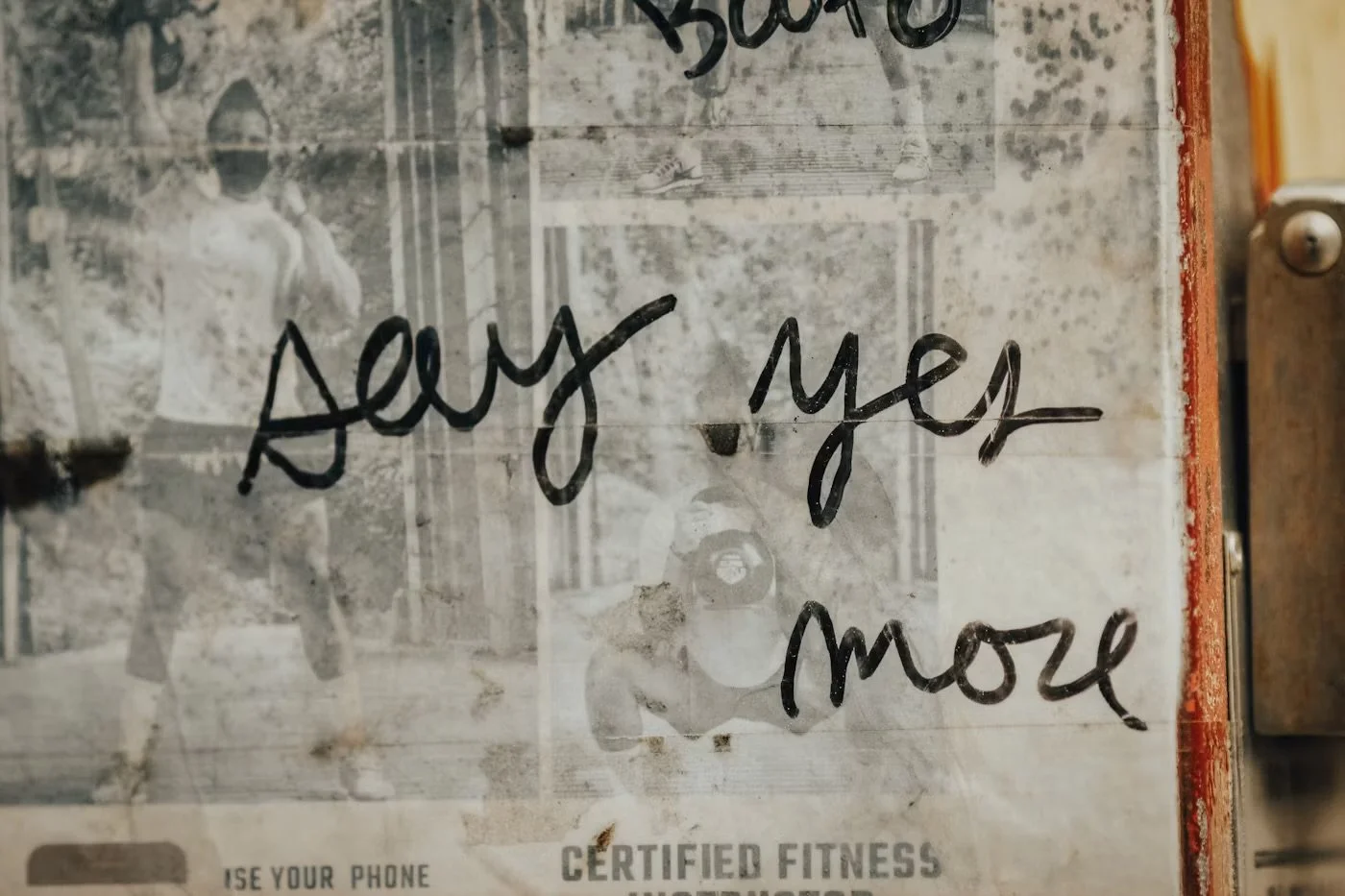How Self-Intimacy Bleeds Into Everything
Self-intimacy isn’t just what happens when the door is locked and your hand is on your skin. It doesn’t stop when the toy shuts off or the candle burns out.
It leaks.
Into the way you move. The way you eat. The way you parent. The way you argue, laugh, and work.
Because when you meet yourself in devotion, the whole world feels the aftershock.
In Your Body
Touching yourself teaches your body it belongs to you first. That confidence doesn’t stay in the bedroom.
- You stand taller.
- You walk slower, like each step is worship.
- You wear clothes like they’re extensions of your altar, not costumes to hide in.
In Your Relationships
When you meet yourself, you stop begging others to validate you.
- You ask for what you want without apology.
- You stop settling for crumbs.
- You meet lovers as equals, not as supplicants.
The devotion you practice solo makes every other connection sharper, safer, and more honest.
In Your Work
Yes, even spreadsheets. Even meetings.
Self-devotion sharpens your focus, cracks open your creativity, and makes you bolder in the room.
- You stop over-explaining.
- You pitch with fire.
- You trust your gut because you’ve trained it in the most intimate arena possible.
In Your Daily Life
Once you’ve touched yourself with reverence, making dinner isn’t just a chore. Folding laundry isn’t just drudgery. Each ordinary act gets painted with presence.
You stop rushing through life like it’s a to-do list. You start living like it’s ritual.
Ritual Prompt One: The Devotion Carryover
After your next menu, write one line in a notebook: *This is how I will carry my devotion into today.* Then live it. Maybe it’s walking taller. Maybe it’s saying no. Maybe it’s tasting your coffee instead of gulping it.
Ritual Prompt Two: The Echo Exercise
The day after a ritual, pause mid-afternoon. Ask yourself: *How is yesterday’s devotion echoing in me right now?* Write it down. Name it. Let yourself see that it lasts longer than the orgasm.
Why This Matters
If you think self-intimacy is just private play, you’ll miss its power.
The truth is, every ritual bleeds. Every menu echoes. Every act of devotion writes itself into the rest of your life.
✨ Self-intimacy isn’t just in the bedroom. It’s in your bones. The world can feel it, whether they know why you’re glowing or not.
The Psychology of Sensation: How to Hack Your Own Body
You don’t need a lab coat or a lecture hall to understand this one: your body is a trickster, and psychology is the cheat sheet full of codes.
The Peachy truth? We are hacking ourselves — in the best way.
Your Nervous System is Listening
Every brush of velvet, every clink of dice, every fingertip grazing your skin sends a signal. Those signals travel straight to the brain: “We’re safe. We’re alive. Pay attention.”
That’s when it happens. Breathing deepens. Shoulders drop. Knots in your chest cease to exist. Goosebumps race wildly down your skin. That’s your parasympathetic nervous system yanking you out of survival mode and into sensation.
The payoff? Relief braided with true spark. A sigh that tastes like being kissed. An exhale that isn’t bracing.
Dopamine: The Brain’s Wink
Dopamine doesn’t care if you just landed a raise or dragged silk across your chest. The circuitry fires the same way.
This means you can game it. Drag cool glass across your skin. Bite down on the string you just tied. Tug your hair with intention. Each tiny hit floods your system. Stack them and suddenly you’re lit up — craving, focused, hungry again.
The win isn’t the objective. It’s the cascade: clarity, energy, and desire that feels deliciously indecent.
Somatic Grounding, With Teeth
Somatic therapy calls it “coming back into the body.” Peachy calls it proof.
Touch your pulse until you feel the beat pulse back. Drag light across your skin in the mirror. Write holy or dirty words down your thighs with bristles. These aren’t assignments. They’re ignition.
The payoff? Heat, tremors, a full-body yes that makes it impossible to keep pretending you’re numb, but still allows you to be safe in the moment.
Why It Works
Parasympathetic activation → muscles unclench, stress drops, breath steadies.
Dopamine stacking → moods climb, focus sharpens, cravings stick.
Embodied memory → every goosebump teaches your body that sensation is survival.
This isn’t indulgence. It’s neurological blackmail — using your wiring against itself until it obeys the spark.
Devotion as a Hack
Here’s the kicker: you don’t need to wait. You don’t need to beg. You don’t need to whisper for permission. You can hack yourself at any moment.
Bite the ribbon. Strike the match. Drag the brush across your skin until goosebumps riot and your body remembers: this is what living feels like.
This is not just wellness. It’s definitely too bold for self-care.
This is devotion. Electric. Holy. Yours.
Why Self-Devotion Isn’t Optional
They’ll call it selfish. Let them.
That’s fine. We’re not here to be delicate.
Self-devotion is not bubble baths and pretty lighting (unless that’s your thing — in which case, get in the damn tub).
It’s the audacity to treat your own needs as urgent. No, imperative. To stop running triage on everyone else’s life while your own is bleeding out.
Self-Devotion Is the Unapologetic Kind
Self-care is polite. Self-devotion is loud.
It says no to plans you don’t want, yes to a nap you didn’t “earn,” and hell yes to an hour that’s just for intentional pleasure.
Not because you “deserve it” — because you exist.
This is self-intimacy without apology. This is how you feed an embodied connection to yourself that no one else can give you.
It’s How You Get Your Edge Back
A well-devoted person moves differently.
You notice it in their posture, the way they hold eye contact, the way their laugh lands in a room.
That’s not charisma. That’s someone who’s been feeding their own fire through mindful sensuality and embodiment practices.
Self-Devotion Doesn’t Wait for a Crisis
Self-devotion doesn’t require mood, budget, or permission slips.
It’s a practice, not a prize.
You don’t wait until you’ve hit the wall because you build the walls with yourself in mind.
So go on. Make your coffee hotter than necessary. Touch your own skin like you’re worth lingering over. Cancel the thing you hate doing. Do something you’ve been waiting a lifetime to try.
Self-devotion isn’t indulgent.
It’s the foundation of your guilt-free pleasure journey, and it’s how you stay dangerous.
When Mantras Don’t Work (And How to Love Yourself Anyway)
Mantras are supposed to be the magic trick: pick a phrase, repeat it until your brain believes it, and voilà—confidence, calm, and clarity. Yeah. If you’ve ever whispered “I am enough” through gritted teeth while your body rolls its eyes, then you already know: mantras don’t always stick. Sometimes? They just feel…wrong.
Why Mantras Can Fail
They Feel Like Lies
If the words don’t match your lived experience, your brain treats them like bad advertising. Instead of healing, you feel the sting of that dissonance: “if I have to say this to believe it, it must not be true.”They Bypass the Body
Mantras are all head, no skin. You can repeat affirmations until your throat is sore, but if your shoulders are tight and your breath is shallow, your body isn’t buying it.They Collapse Under Pressure
When stress spikes, your mind doesn’t suddenly remember the mantra, it defaults to survival scripts. If those scripts are wired around guilt or shame, the mantra never gets airtime.
How to Get Around the Mantra Trap
Anchor to Sensation → Don’t leave the words floating in your head. Pair them with something you can feel: breathe with a hand on your chest, match them to the rhythm of your pulse, or let them ride the stroke of your fingers across your skin. When the body feels it, the mind listens. Talk to your body like it’s your lover, because it is.
Reframe Into Actions → Instead of a declaration like “I am enough,” try a doing-phrase: “I gave myself five minutes of self-love.” Actions prove devotion faster than words alone.
Use Micro-Truths → Start so small it’s undeniable: “I am breathing. I ate breakfast.” Each little truth is a rung on the ladder toward bigger belief.
Let the Body Lead → Whisper your phrase while you stretch, brush your arm, or trace light across your skin. When movement joins in, the words stop being theory and become lived.
Get Playful → Stiff affirmations die quick. Try: “I’m the best bad idea I’ll ever have.” Humor and mischief trick the brain into relaxing—truth slips in sideways.
The Devotion Twist
Self-devotion isn’t about chanting until you’re convinced. No one is handing you a truth and demanding belief. It’s about weaving words, touch, and lived experience into your own life, and creating a concrete foundation for self love in the way you experience it. Mantras aren’t wrong—they’re just incomplete on their own. When you let your body, your actions, and your sly humor join in? That’s when devotion stops being a script and starts being yours.
The Science of Slow Touch: Why Lingering Strokes Feel Like Love
Most of us think of touch as one sense, but your skin actually carries multiple nerve systems designed to process different kinds of contact. Part of self-devotion is hacking that to your benefit and luxuriating in the science of your body.
The Science
Fast, sharp touches? Those are your myelinated nerves. They transmit quickly, helping you react to danger. The soft, lingering, slow strokes? Those light up a completely different system: C-tactile fibers.
C-tactile fibers are slow, unmyelinated nerves tuned to gentle caresses at skin temperature. They don’t just fire off in your body; they route directly into the emotional parts of your brain. This is why a slow stroke across your forearm doesn’t just register as touch. It registers as comfort, intimacy, and safety.
Researchers have found what your body already knows: slow, gentle touch carries more weight than quick contact. Science simply confirms it—slow strokes mean more to the body and the heart than rushed ones ever could.
Why It Feels Like Love
When you trace your skin slowly, you’re not just stroking the surface. You’re speaking directly to your nervous system, telling it: you are cared for, you are safe, you can soften now. Here’s the secret—your brain encodes those signals in the same regions that process bonding, affection, and trust.
That’s why slow touch feels like love. Because on a neural level, it is.
Temperature Play 101: Hot, Cold, and the Shock of Contrast
Temperature is one of the oldest languages of the skin. Your nerve endings are dotted with thermoreceptors, tiny sensors tuned in to warm and cool.
Warmth dilates blood vessels, relaxes muscles, and signals comfort.
Cold tightens, awakens, and sharpens awareness. The magic, though, isn’t just in one or the other—it’s in the contrast.
When your skin moves suddenly from warm to cool, those receptors fire off rapid signals that heighten awareness of the area. That’s why pressing a chilled object against your wrist feels so electric, or why the heat of a shower followed by a cool breeze feels intoxicating.
Neuroscience calls this “sensory gating” because your brain pays extra attention when a shift happens. In intimacy, that means the contrast heightens arousal and anchors your memory. It tricks your brain and encompasses it, shedding internal thoughts and monologues unrelated to the feelings.
So, whether it’s warmth seeping in slowly or a shock of cold against a pulse point, temperature is less about comfort and more about waking your body up. It’s a reminder that your body is not just living through the world, it’s alive in it.
Sensory Play for Adults: A Decadent Reawakening
When we think of sensory play, most of us picture children learning through touch, sound, sight, and movement. What’s less talked about is that our brains never stop craving those inputs. Adults need sensory play just as much, if not more, because our nervous systems, our creativity, and our intimate lives are deeply tied to how we experience the world through our senses.
Our nervous systems are wired to respond to sensation. Our intimate lives? They thrive when we give our senses the attention they deserve. This is where sensuality begins. Through self-love, self-intimacy, and the simple act of paying attention.
Why Sensory Play Isn’t Childish—It’s Essential
Your skin is your body’s largest organ, laced with millions of nerve endings. Every brush of fabric, shift in temperature, breath of scent lights up your nervous system. Neuroscience tells us that when you engage your senses, you’re not just indulging. You’re nourishing your brain. Literally.
• Touch and texture calm cortisol (the stress hormone).
• Scent and sound boost dopamine (the chemical of reward and anticipation).
• Multi-sensory exploration strengthens neuroplasticity (your brain’s ability to stay flexible, creative, and alive).
This isn’t frivolous. It’s how you keep your body and mind lit from within. Sensory play is intentional pleasure—an act of erotic mindfulness that keeps you connected.
The Decadence of Play as an Adult
Life as an adult often narrows into survival mode: schedules, obligations, productivity. It also tends to flatten sensation into routine, making sensations fade into the background. Think about it: the feel of your phone case in your hand, the same soap in the shower every day, the hum of appliances around you. You may notice their absence, but when was the last time you noticed their presence? Sensory play is how you break the spell. It’s how you begin to notice those little physical pleasures that slip by each moment.
Awakening your senses isn’t difficult. Think of it like the world beyond the opaque glass of adulthood. The glide of velvet under your fingertips. The shock of a cool stone pressed to your pulse point. The way jasmine smoke curls into memory. These are invitations. Each sensation is a doorway back into curiosity, into a self that feels awake, textured, and alive. This is tactile exploration elevated to devotion.
Unlike in childhood, you now carry agency. You get to decide when, where, and how you play. That freedom is the foundation of true self-intimacy.
From Sensory Play to Romantic Self-Devotion
Here’s where it gets juicy. Sensory play isn’t separate from intimacy. It’s the foreplay, the crescendo, the edge.
When you drape silk across your arm or let a soft brush wander across your chest, you’re priming your body for desire. When you take time to light a candle or incense, to breathe in citrus or rose, you’re telling your nervous system: This is my ritual. This is my pleasure. This is my body, accepting and open.
Self-romantic play isn’t just about climax. It’s about atmosphere. About layering textures, scents, and moments until your body feels like the most decadent place to be.
Why It Matters More Than You Think
Here’s the truth: when you give yourself permission to explore without guilt, you rewrite the old story that pleasure must come from someone else or that it must be “earned.” Sensory play reminds you that you are already worthy, and you can treat yourself right.
Here’s where the Peachy part unfolds. Since sensory play shouldn’t be separate from intimacy (it’s the foundation, remember?), people often need help rewiring their bodies to accept it. When you slow down enough to notice a cool coil of metal sliding across your ankle, you prime your nervous system for deeper arousal and tenderness. When you take the time to romance yourself first, everything else shifts. Confidence sharpens. Stress softens. Connection deepens.
Sensory play in self-devotion isn’t a luxury. It’s a return inward. Every cool touch, every warm hand, every playful flick is a love letter to your own skin. The first word is yours to write, The Peachy Vibe just hands you the pen.
Why Self-Devotion Feels Different Than Self-Care
When most people hear self-care, they picture something familiar: a face mask, a hot bath, a scented candle. These are beautiful, nourishing temporary acts. They soothe the moment, not the vessel.
Self-devotion lives in an entirely different space. It’s not about ticking a box or performing an act. It’s about showing up for yourself in a deliberate, intimate, and unyielding way. Self-devotion is a relationship…with yourself.
Self-Care vs. Self-Devotion
Self-care is the maintenance. Self-devotion is the commitment.
• Self-care says, “I need to recharge and be kind to myself.”
• Self-devotion says, “I am worth my own love, always.”
Where self-care might address the classic burnout after it happens, self-devotion builds a foundation so deep that your energy and confidence stay steady, even when life gets a bit loud.
The Confidence Shift
When you treat yourself as someone worth devotion, you stop negotiating your value. You show up for your body, your mind, and your sensuality the way you would for a partner or a cause you believe in. That shift changes everything: the way you walk into a room, the way you touch your own skin, the way you meet your own eyes in the mirror. It lingers in showers and baths, in between care routines, and occasionally in Aisle 9.
Self devotion is the foundation of true love. That giddy feeling? You can find it in the little moments.
How to Practice Self-Devotion Today
1. Start Small, Stay Consistent — Choose one act each day that’s just for you. Not for productivity, not for anyone else’s eyes. A moment of sacred breath and space.
2. Make It Sensory — Engage sight, scent, sound, touch, or taste in a way that feels deliberate. This is more about connecting yourself to the moment than it is following through on an act.
3. Name the Moment — Before you start, say it to yourself: This is for me, because I’m worth showing up for. This is for me, because I am worth devotion. This is for me.
4. Protect the Ritual — Treat it like a promise to yourself, an appointment you can’t miss. Use habit hacks, like linking one of your morning or evening routines when you first start.
Why It Matters
Self-devotion builds confidence that isn’t fragile — the kind that doesn’t crumble when someone overlooks you or when life gets messy. It’s where sensuality and self-respect meet, and it leaves you feeling more in yourself, not just cared for.
This isn’t something you can gift. This is something you must learn to own.
Hot Spots: The Science of Touch in New Places
Your skin is a map—and you haven’t visited all of it.
Most of us stick to the same familiar areas when we touch ourselves or our partners. That can get…boring after a while. Thankfully, our skin holds a massive network of mechanoreceptors—specialized nerve endings that respond to pressure, vibration, stretch, and temperature. My bet? You’ve probably accidentally ignored most of them.
When you touch a new spot in the right way, you’re not just creating a new sensation—you’re lighting up parts of your brain’s somatosensory cortex that may have been quiet for years.
The Science Behind “Hot Spots”
Your skin is a map, but the landmarks aren’t evenly spaced. Some places are wired for fireworks, others for deep grounding.
Lips & fingertips: Dense with Meissner’s corpuscles—tiny touch sensors that light up with fluttery, whisper-light strokes.
Neck & inner wrist: Laced with C-tactile fibers, slow and unmyelinated, built to melt under warm, lingering caresses.
Behind the knees & inner elbows: Thin skin, heat-holding folds, and a tangle of nerve endings make these spots flare with slow exploration.
Lower back & hips: Sparse on light-touch sensors, but home to Pacinian corpuscles that crave that extra oomph, like firm, rolling pressure, in turn sending grounding signals deep into your core.
Exploring Without Rushing
1. Pick an unfamiliar zone
The base of your skull. The curve of your outer thigh. The back of your calf. Anywhere you rarely touch with intention.
2. Start with one tool
Just fingers, or a single soft brush, or a silk scarf. Keep it simple—so your brain can map every shift in sensation.
3. Change the variables slowly
Begin lighter than you think. Add a temperature twist: a chilled spoon, then the warmth of your palm. Shift the tempo—long sweeping lines, then tight little circles.
4. Watch for echoes
A touch at your neck might ripple into your scalp. A slow stroke down your inner arm might bloom heat across your chest.
Why Novelty Works
Your brain is plastic—in the good way. When you feed it new sensations, it devotes more neural “real estate” to those areas. Which means: the more you explore, the more alive—and responsive—that part of your body can become.
Your body isn’t fixed—it’s a constantly changing landscape. Every time you discover a new hot spot, you’re not just adding to your pleasure map—you’re expanding it. And the more space you give sensation, the more it will give back.
Daily Ritual: How a Sensory Body Scan From Head to Toe Rewires Your Stress Response
How one self scanning technique can change your life. Plus, a playful daily check-in that brings your senses forward and pushes your inner thoughts out.
The Sensory Scan
Your body, one gentle checkpoint at a time.
Start here, with you. One hand on your chest, one on your belly. Three slow, deep breaths. Feel your ribs expand and settle, this signals your nervous system: we’re safe.
From the crown of your head, drift your fingertips through your hair. Go slow enough to feel each strand shift. (Scalp touch boosts blood flow and kicks up serotonin. This is nature’s calm-maker.)
Cup your palms over your eyes, letting warmth seep in. Let your jaw fall open, the way it does when you’ve forgotten to hold it. (Heat here nudges your parasympathetic nervous system to slow your heart rate.)
Pinch and release where your neck meets your shoulders, then smooth down toward your collarbone, letting the day slide off. (This loosens fascia, your body’s clingy wrap, and frees tension from too much hunching.)
Stroke your arm from elbow to wrist, then turn it over and do the same along the palm side. Notice the difference. (C-tactile nerve endings in your skin are tuned for slow, affectionate touch. Give them what they want.)
Draw slow, lazy figure-eights across your chest, spiraling toward your navel. (This gently stimulates your vagus nerve, which is your body’s built-in relaxation switch.)
Press your palms into your lower back in gentle circles. Let your hips sway side to side with the movement. (That deep muscle you’re easing, the quadratus lumborum, clenches tight from sitting and melts with warmth and motion.)
Squeeze down your legs from thigh to calf in long, unhurried passes. (Compression here helps move lymph fluid, waking up circulation and clearing sluggishness.)
Roll each ankle in slow circles, then pinch and release each toe. (Your hands and feet are rich in nerve endings. Touching them sends calm all the way back up.)
When you’ve reached the end, pause. Notice what’s shifted: your breath, your shoulders, your thoughts. This is what meeting yourself feels like.
Why Repetition Matters
A single scan is soothing. A daily scan builds neuroplasticity—your brain’s ability to form new pathways. Over time, the map of your body in your brain grows richer and more complex, making it easier to drop into a state of calm and pleasure on demand. That sounds…useful.
Guilt-Free Pleasure: How to Give Yourself Permission to Enjoy Sensuality
We grow up learning the rules for everything—how to dress, how to speak, how to fit neatly inside the boxes other people have built for us until they’re so intertwined we end up boxing ourselves in.
No one tells us that pleasure is a language we can relearn.
For many of us, pleasure comes with baggage. Guilt. Self-consciousness. The quiet voice that says “You shouldn’t…”
Here’s the truth: your body is yours. Your pleasure belongs to you. It isn’t something you have to earn, justify, or ration. You get one life, one body. The secret is to love it now and respect it guilt free.
Step One: Recognize the Guilt Spiral
If you find yourself bargaining—I’ll clean the kitchen, then I’ll take a bath—you’re setting your pleasure up as a reward for productivity.
The problem? You’re reinforcing the idea that rest or sensuality is only valid if you’ve been “good enough.” Self devotion helps you balance that towards a more ideal scale. If you’re constantly trading your care for chores because you’re feeling pressure…you’ve hit the guilt cycle.
Step Two: Create a Permission Ritual
Pick a small, sensory ritual that becomes your green light. This could be:
• Lighting a specific candle.
• Playing a certain playlist.
• Cradling yourself in a soft blanket.
By pairing this ritual with pleasure or self-devotion, you create a new neural pathway: this moment is allowed.
Step Three: Anchor the Feeling
After you’ve given yourself that experience, leave a tangible reminder. It could be a sensory sticker, a scarf on your nightstand, or a scent on your wrist.
That reminder becomes a whisper to your future self: You are allowed to feel good. You are worthy of the time. Your pleasure matters.
Step Four: Drop the Invisible Audience
If you’re worried about how you look while exploring your own pleasure, remind yourself—no one’s watching. Even if they were, your worth wouldn’t change. Self devotion starts with learning to love yourself, even the parts you want to hide.
Pleasure isn’t selfish.
It’s a way of telling your body, your mind, and your spirit: I see you. I care for you. I choose you.
You don’t have to wait until the to-do list is done to mean it. In fact, we believe you should put it right at the top.
The Sensation Map: Navigating Your Body Like New Territory
Your body is more than a vessel. It’s a landscape full of valleys, ridges, hidden pockets, and treasures of sensation you may never have explored.
When we’re young, touch is discovery. We run our fingers across rough cracked tree bark, dip our toes into slick and icy creeks, press our faces into a sun-warmed pillow that smells like home. By puberty, we are all out of our minds with very specific self discoveries, most of which never wander far. Then, somewhere in adulthood, we forget that our own skin can be just as uncharted as the world around us, simply fascinating… and we don’t even realize we skipped about 90% of it during the learning phase!
A sensation map is about reclaiming that curiosity. Instead of rushing to “the point,” it’s all about slowing down. Caressing the inside of your wrist. Noticing the way your scalp tingles under your fingertips as you gently tug a few strands of hair, then sink your hands in. Tracing your bottom lip with a nail, slow and sensual.
Mapping your body isn’t about performance — it’s about presence. Each sensation is a key. Each pause is a chance to linger before you journey on. You’re unlocking yourself, one sensation at a time.
By the time you finish, you’ll know something new about your body in a way that no one else can. That’s the kind of knowledge that changes everything. Don’t worry about memorizing your map or starting right now. For today, just acknowledge it exists.
The Partner Ripple Effect: How Prioritizing Your Own Pleasure Transforms Connection
Pleasure is Contagious
When you devote time to your own pleasure, it doesn’t just stay in a private corner of your life, silently lifting you up when you can find the time. No, it radiates. Your confidence shifts. Your body language softens. Your presence becomes… magnetic. People, especially partners, feel that pull without you saying a word. It comes through your eyes, the sparkle of a memory. It comes through your touch, more intimate and more sure than before. You’re a walking sensation buffet and the shift is undeniable.
The Why
Pleasure, especially slow, mindful pleasure, grounds you in your own body. Feeling grounded changes how you respond to touch, conversation, even shared silence. Partners often mirror the energy you give off, so when you are centered, open, and responsive, they lean in too. It’s like the cascade of flirting before tumbling into bed. You are the wink. Don’t feel it? Let’s make sure you do.
The Ripple in Action (Try This)
1. Start alone
Before seeing your partner, give yourself a few minutes of intentional touch or movement, something that wakes your senses.
2. Bring that energy into the room
Carry the warmth, softness, or slow confidence you cultivated with you. Let your partner feel it without explanation.
3. Share without pressure
Instead of expecting them to match your mood immediately, let them acclimate to it. The shift in your energy is the invitation.
4. Notice the feedback loop
Watch how they respond, whether it’s a hand resting longer, a voice softening, or eyes meeting yours more often.
The Quiet Truth
When you make your own pleasure a priority, you show your partner what it looks like to value sensation, connection, and presence. That modeling is the ripple, giving your partner permission to step into the same space with you. Self devotion is like pigment dropped into a still cup of water. Don’t forget to stir it up and share.
From Head to Toe: Turning Tension into a Sensory Playground
Yes, you can relax.
Tension doesn’t just live in your muscles—it dulls your sensations. It leaves the outside world in a bit of a fog as you try to slog through it. Stepping back for a slow, sensual head-to-toe scan doesn’t just release knots, it reclaims those spots as playgrounds for pleasure, rewiring your body to reject tension. You’re not just noticing your body; you’re inviting it to respond. Safe self-sensation is the antithesis of stress. It’s the true self care.
The Sensual Scan (5 minutes)
1. Set the mood
Close your eyes, and take three deep, deliberate breaths. Imagine every inhale drawing in awareness and every exhale making space for sensation. Repeat if needed until you feel your shoulders drop.
2. Crown → Brows
Picture a warm ribbon of water flowing over your scalp, forehead, and temples, dripping and diving behind your ear and down your neck.
• Sensual shift: rake fingertips through your hair slowly then smooth your brows with the pads of your thumbs, lingering on the glide.
3. Eyes → Lips → Jaw
Let your eyelids grow heavy. Loosen your jaw so the tongue rests heavy. Feel your lips part as you relax.
• Sensual shift: trace a fingertip along your lower lip; cup your chin lightly before sweeping fingers down your neck.
4. Neck → Shoulders → Upper Back
Tip your head to one side, exposing the length of your neck. Let your breath skim over your collarbones.
• Sensual shift: pinch-and-release along your shoulder’s curve; drape warmth or coolness where skin is bare.
5. Arms → Palms
Stroke your forearms with the back of your nails; feel the contrast of textures.
• Sensual shift: press palm to palm, pulling slowly back until fingertips just barely part.
6. Chest → Ribs → Belly
Let your hands explore with no rush—across your chest, over each rib, down to your navel.
• Sensual shift: circle your belly with one hand while the other cups your side, noticing the pull of skin under your palm.
7. Low Back → Hips → Glutes
Rock your hips in a slow figure-eight, tracing curves with your own hands.
• Sensual shift: press a cool object onto one hip dip, then replace it with your warm palm.
8. Thighs → Knees → Calves
Glide both hands down the length of your thighs, thumbs in, fingers out. Pause at the knees before sliding lower.
• Sensual shift: wrap fabric around a calf and pull gently upward before letting it fall away.
9. Ankles → Soles → Toes
Roll each ankle; press into the arch with your thumb. Finish by spreading toes wide, then curling them.
• Sensual shift: alternate a light brush over the tops of your feet with a firm rub into the arch.
The secret to turning tension into pleasure
Pressure grounds you. Temperature wakes you. Texture seduces you. Play with these combinations—smooth after rough, warm after cool, firm after feather-light—and your body will reward you with deeper, more surprising responses.
Make it personal
When you finish, notice which parts of you feel most alive. That’s your invitation for the next time—your personal map for where touch becomes sensation. Repeat as necessary, shamelessly.
The Sensory Ritual: How Touch Unlocks Confidence and Connection
When was the last time you noticed the way your fingertips glide over silk? How your skin drinks in the warmth of a sunbeam? How a single hug can loosen your body head to toe? We live in a world that’s constantly shouting for our attention, yet the most powerful way to reconnect with ourselves often lies in the quietest, simplest thing—touch.
Intentional touch isn’t just about pleasure (though, yes, it can be absolutely delicious). It’s about coming home to yourself, reclaiming your body as your own, and giving yourself the steady, grounding presence you need to feel truly confident.
The Science of Sensation
Our skin is our largest organ, lined with millions of tiny sensory receptors. Each texture, temperature, and movement sends electrical signals to the brain, activating emotional and physical responses.
• Soft textures like velvet and satin activate comfort pathways in the brain, lowering stress levels.
• Cool sensations can sharpen focus and enhance awareness, pulling us into the present moment.
• Rhythmic, repetitive movements, like tracing a fingertip along your arm, can trigger the release of oxytocin, the “connection” hormone.
When you pair these elements together intentionally, you’re not just feeling something—you’re reprogramming your nervous system to associate your own touch with safety, calm, and confidence.
From Awareness to Confidence
Think of intentional touch as training your body to trust itself again. Many of us carry years—sometimes decades—of disconnect from our physical selves. By engaging with tactile rituals, you create new neural pathways that reinforce the belief:
I belong here, in my body. I am safe here. I am loved. I am enough.
Over time, this transforms how you stand, how you move, and even how you interact with the world. Confidence isn’t just a mental state—it’s an embodied one, and secret smiles with yourself? They’re the real intrigue.
How to Start Your Own Sensory Ritual
You don’t need special tools to begin, though having curated textures and temperature contrasts at your fingertips with self guided help can deepen the experience. For now, start simple:
1. Choose a Texture: Pick something that feels good in your hand—a silk scarf, a smooth stone, or a plush fabric.
2. Set Your Intention: Decide what you want this ritual to bring you—calm, empowerment, curiosity.
3. Slow Down: Instead of rushing, let your senses take the lead. Notice micro-sensations—the shift of fabric, the way your skin reacts, the subtle temperature changes.
4. Anchor the Feeling: After a few minutes, close your eyes and breathe deeply, letting the sensation settle into your memory.
Why This Matters for Self-Connection
Sensory rituals are about more than “feeling good”—they’re about being seen by yourself. In a world that encourages outsourcing everything from validation to trends, these moments are your quiet rebellion. They’re proof you don’t have to wait for someone else to bring you pleasure, calm, or confidence—you can make it happen anytime.
The Art of the Pause: Why Stillness is the Most Underrated Sensation
We’re trained to think pleasure is all about movement — a rhythm, a build, a rush toward the next thing. We forget that some of the most electric moments don’t happen during the touch… they happen in the pause before.
The pause is not an absence, it’s a magnifying glass. It stretches the space between sensations until every nerve is listening. It makes your skin hum with suspense. It levels up the experience by keeping things thrilling and exciting. That anticipation? It’s worth building.
Try it:
1. Start with movement. A brush of silk across your forearm, your fingertips along your jaw.
2. Now stop. Hold your hand just above your skin, close enough to feel the heat radiating but not close enough to touch.
3. Notice the shift. The absence becomes its own sensation — an ache, a spark, a question mark.
The pause tells your body something is coming. When it finally does, the contrast makes it unforgettable.
Stillness isn’t empty. It’s loaded. The more you learn to savor it, the more every touch feels amplified.
The Art of Permission: Giving Yourself the Green Light
We’re taught from a young age to look outward for permission. Can I speak, explore, create, take up space? We wait for the permission to let go and be free.
Somewhere along the way, we start applying that same waiting game to our deepest desires and even our basic needs — whether that’s taking a rest day, indulging in pleasure, or trying something that might change how we see ourselves.
We wait, consciously, sometimes subconsciously.
While we wait, the moment moves on. The desire to indulge disappears. We convince ourselves it was highly impractical, mostly unnecessary, maybe even a little bit selfish.
These are lies we tell ourselves to lock down our desires. To normalize ourselves. We tell ourselves “no” over and over again until we forget the desires existed in the first place.
Here’s the truth that gets buried under all that conditioning: you already hold the authority to say “yes” to yourself. The only permission you need is yours. After all, who are you answering to about you?
Permission Is Not a Luxury
Permission isn’t something you earn by being productive enough or kind enough. It’s not a gold star handed out by someone else. Permission is a tool — a key that unlocks the parts of you that feel dormant or restrained.
The act of granting it to yourself? That’s hard coding your brain to revel in the reflection that “I trust my own judgment. I believe my feelings matter.”
How to Start Saying Yes
• Write it down. Literally. On a sticky note. In your phone’s lock screen. On the bathroom mirror. The words “I give you permission” can hit differently when you see them staring back at you.
• Be specific. Permission for what? To rest without guilt. To wear the thing you think is “too much.” To spend an hour on a purely selfish joy.
• Anchor it to sensation. The next time you give yourself permission, pair it with something physical — a deep inhale, a hand pressed to your chest, a stretch, the feel of warm water on your skin. This ties your permission to your body, not just your thoughts.
Why Permission Feels So Hard
If granting yourself permission feels uncomfortable, that’s not failure — that’s conditioning. Many of us were raised in environments where pleasure was rationed, independence was negotiated, and “because I want to” wasn’t considered a valid reason without visible productivity.
Here’s the thing, though. Permission is like a muscle. The more you use it, the more natural it becomes. Over time, your inner voice shifts from “Can I?” to “Of course I can.”
The Green Light Is Yours
There will always be people and systems that benefit from you waiting — from your self-trust staying locked away. Self-trust is the key to confidence. When you love yourself, inside and out? Every time you hand yourself that green light, you chip away at the old scripts.
So write it. Say it. Live it.
You’re not just allowed… you’re invited. Say yes.
Guided Sensations: A New Way to Connect With Your Body
We live in a world that tells us to think about our bodies instead of feel them. We count steps, measure calories, track hours of sleep — but rarely pause to notice how our skin tingles when we brush our fingertips across it, or how our breathing deepens when we lean into a stretch. Some signals, like a backache, full bladder, or sprained ankle force you to pay attention. Others pass right by. It’s time to start teaching yourself to notice the good input, too.
That’s where guided sensations come in. They’re tiny, intentional moments where you focus your full attention on one physical experience. It could be the way a soft brush drags over your collarbone, the warmth of a heated rice bag resting on your belly, or the texture shift when you run a polished stone across your skin.
The goal isn’t to “achieve” anything — it’s to practice presence. When you give your body permission to feel without judgment or agenda, you strengthen your connection to it. You start to notice what you like, what you crave, and what makes you exhale with relief.
Guided sensations are a conversation with yourself — one touch at a time.
Permission to Feel — Overcoming Guilt Around Pleasure
You are allowed to feel good.
Not just good — great. That’s not a luxury, it’s a birthright.
It sounds simple, but for many, it’s an offbeat statement. Pleasure, whether physical, emotional, or sensory, can trigger guilt, especially if you’ve been taught self-indulgence is wrong. That guilt can creep in quietly, second-guessing you mid-bath or mid-bite. It can shout, telling you you’re “wasting time” or you “should be doing something more productive.” Sometimes it comes from the people around you with little looks or comments that hit your self-worth and muffle your body’s needs.
Here’s the plain truth: pleasure is productive. It feeds your mind, softens your body, and connects you to the self inside. The part most worthy. The place of self devotion.
Step 1: Catch the Voice
Before you can quiet it, you have to hear it.
Notice when it speaks up: mid-bath, mid-book, mid-touch. This voice is not your truth. It’s a habit you have learned, and habits can be unlearned.
Step 2: Rewrite the Rules
Pleasure isn’t a treat you earn — it’s a function of being alive. You don’t have to meet a deadline to deserve it. You don’t have to prove your worth before you touch your own skin. You damn sure don’t have to put self-devotion last. Pleasure is part of your health — and health isn’t negotiable.
Step 3: Make Permission Physical
Sometimes the fastest way to kill guilt is to ritualize its opposite.
Light a candle. Pour a favorite drink. Whisper, “I give you permission” in the mirror.
Let your body and mind learn that you’ve stepped into a space where pleasure is expected and safe.
Step 4: Begin Small, But Begin
If guilt still crowds in, start small. Touch something soft. Smell something that stirs a memory. Let your fingers drift along your skin until goosebumps flow. No justification. No audience. Just you. Whenever. Wherever.
Step 5: Anchor the Feeling
Afterward, plant a sensory marker — a scent, a texture, a small token in your pocket — so your body remembers. The more you anchor pleasure, the less power guilt has. You’re moving toward self-fulfilling love, and guilt doesn’t get a seat.
Your body is not a checklist. It’s a home. A temple. A garden. It deserves joy, comfort, and care without condition. The Peachy Vibe isn’t about self-care as a chore — it’s about self-devotion as a way of living.
Grounding Through Touch: How Sexual Energy & Sensation Calm Anxiety
Anxiety doesn’t just live in your head—it hijacks your whole body. Heart racing. Breath shortening. Muscles pulling tight. It’s a full-body takeover. You can chant a mantra until you’re blue in the face, but panic doesn’t bow to words.
Panic bows to sensation.
When you bring your body back to your senses—through skin, breath, and even sexual energy—you’re not indulging. You’re regulating. You’re coming home.
Why Anxiety Feels Like a Full-Body Takeover
When your sympathetic nervous system kicks in, your body floods with adrenaline. Heart pounds, chest tightens, thoughts scatter. The brain’s interoception, the way it reads your internal signals, often misfires, making you feel like you’re drowning when you’re only breathing fast.
That mismatch feeds the panic loop instead of breaking it.
This isn’t weakness. It’s wiring, and you’re not alone.
Grounding Panic with the Five Senses
Therapists and trauma specialists often recommend the 5-4-3-2-1 sensory grounding method to reroute a racing brain:
5 things you see
4 things you feel
3 things you hear
2 things you smell
1 thing you taste
It sounds simple, but it’s neuroscience at work. Redirecting focus to your senses re-engages the thinking brain and softens the amygdala’s alarm bells. Even sour candy works—its bold jolt pulls you back into the present, cutting through spirals of fear.
Sensation interrupts panic. Every time.
Self-Devotion: Touch as Nervous System Medicine
This is where touch—and yes, even sexual touch—becomes the crème de la crème of grounding. Try these practices when panic takes over:
Gentle Self-Touch
Slow strokes, a hand on your chest, brushing your arm—these engage C-tactile (CT) fibers, nerve endings tuned to soothing touch. They lower cortisol, steady your breath, and whisper “safe” to your nervous system.Sensate Focus (Non-Goal Pleasure)
A cornerstone of sex therapy, sensate focus teaches you to explore touch without chasing orgasm. Temperature. Texture. Softness. Your job is to notice, not perform. That shift rebuilds presence when anxiety pulls you out of yourself.Pleasure as Proof
When you let yourself self-pleasure with devotion, you’re not being frivolous. You’re teaching your body it can still feel joy, still feel alive. That’s nervous system regulation dressed as sweetness.
This is self-devotion at its most intimate: turning your own touch into medicine.
The Devotion Twist
Grounding isn’t about fighting panic with words—it’s about slipping sensation under its door.
The five senses are your anchors.
Touch is your balm.
Self-pleasure? That’s your holy home practice, the reminder that even in chaos, your body is yours.
You don’t have to beg your brain to calm down. Your senses can bring you back to yourself.



































